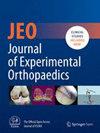Robotic-assisted hip and knee revision arthroplasty: A scoping review
Abstract
Purpose
Technological advances have significantly revolutionised orthopaedic surgery over the past decades. The introduction of robotic-assisted (RA) systems in total joint arthroplasty (TJA) surgery, especially in total hip arthroplasty (THA) and total knee arthroplasty (TKA), represents a key innovation. While the advantages of robotic assistance in primary joint replacement surgery are relatively well known, its application in hip and knee revision surgery implies a more complex and challenging scenario. The procedures needed are inherently more difficult compared to primary arthroplasties because of considerable bone loss, scar tissue, compromised anatomical landmarks, and at times even damaged or eroded joint structures.
Methods
This scoping review synthesises existing literature on the application of RA systems in revision hip and knee arthroplasty. A systematic search on the six major databases in September 2024 identified 24 eligible studies for inclusion.
Results
Although various studies and case reports have demonstrated the successful use of robotics in TJA surgeries, the existing body of literature concerning revision surgery is still limited, and many questions remain unanswered. While, for instance, robotic systems seem to have held some promise for better improvement in implant positioning and alignment, it is still quite unclear whether this development in technological advancement will translate into better long-term outcomes such as improved implant longevity and lower revision rates.
Conclusions
Although early data are promising, having some possible short-term advantages, wide diffusion is limited because of high costs, significant training requirements, and limited long-term outcome data. By identifying gaps in the current literature and emphasising areas for future investigation, this review aims to define the ongoing development and refinement of RA applications in revision arthroplasty, ultimately seeking to determine whether these technologies can achieve sustainable improvements in implant longevity and patient satisfaction.
Level of Evidence
Level III.


 求助内容:
求助内容: 应助结果提醒方式:
应助结果提醒方式:


